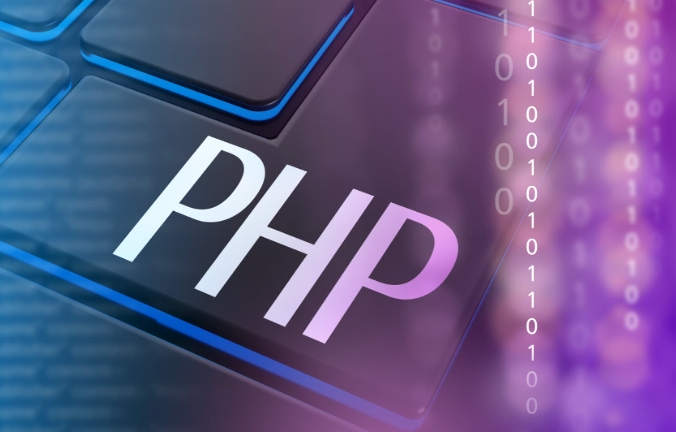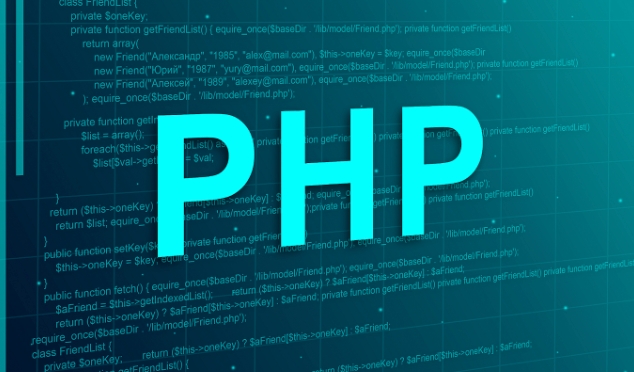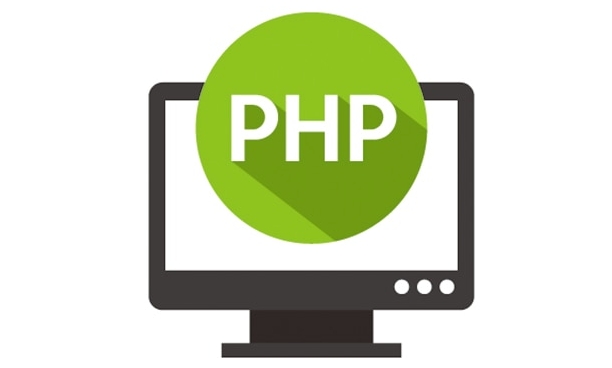Upgrading the PHP version is actually not difficult, but the key lies in the operation steps and precautions. The following are the specific methods: 1. Confirm the current PHP version and running environment, use the command line or phpinfo.php file to view; 2. Select the appropriate new version and install it. It is recommended to install it with 8.2 or 8.1. Linux users use package manager, and macOS users use Homebrew; 3. Migrate configuration files and extensions, update php.ini and install necessary extensions; 4. Test whether the website is running normally, check the error log to ensure that there is no compatibility problem. Follow these steps and you can successfully complete the upgrade in most situations.

Upgrading the PHP version is actually not difficult, but many people are stuck on specific operations and precautions. If you are using an older version of PHP, such as 7.4 or earlier, it is recommended to upgrade to 8.x or 8.2 as soon as possible, because the new version not only has better performance but also has stronger security.

Here are a few key points to explain how to operate:

Confirm the current PHP version and running environment
The first step is to figure out which version you are using now and how your server runs PHP. Common ones include Apache mod_php, Nginx PHP-FPM, or container environments such as Docker.
You can enter from the command line:

php -v
Look at the output results and you will know the current version. If it is running through a web server, you can also create a phpinfo.php file and open it in the browser to see the details.
Different environment upgrade methods are slightly different. If you confirm the architecture and then do it, it will be easy to make mistakes.
Select the right new version and install it
The official PHP website (php.net) will list all stable versions. Generally speaking, it is recommended to upgrade directly to the latest 8.2 or 8.1 unless you have compatibility issues with the framework or CMS (such as WordPress plug-in).
Linux users can install it through a package manager, such as Ubuntu:
sudo apt install php8.2
If you have multiple PHP versions installed, you may need to use update-alternatives to switch the default version. For macOS users who use Homebrew, you can use:
brew install php@8.2
Then remember to link to the correct path.
Some systems also support PPA sources like Ondrej Sury , which can easily manage multiple PHP versions. You can check the official documentation or community guide for this.
Migration of configuration files and extensions
Don't rush to restart the service after upgrading, first check whether the configuration file needs to be updated. Usually the new version of php.ini will be placed under /etc/php/8.2/cli/php.ini or similar paths.
You need to copy the custom configurations in the old version (such as memory_limit , upload_max_filesize ). Also pay attention to whether the extension is enabled, such as:
- mysqli
- pdo_mysql
- opcache
- exif
- intl
Some of these commonly used extensions need to be installed manually, such as:
sudo apt install php8.2-mysql php8.2-curl
If you have used PHP-FPM before, you should also restart the service:
sudo systemctl restart php8.2-fpm
Apache or Nginx also requires a reload configuration.
Test whether the website is running normally
The last step is very important: Verify that your website has reported an error. Especially when many third-party plug-ins or old code are used, syntax errors or abandoned functions may occur.
You can test it in the development environment first, or temporarily enable the error log before going online:
error_reporting(E_ALL); ini_set('display_errors', 1);
Observe if there are any prompts like "Deprecated" or "Fatal error". If everything is OK, the new version can be put into use.
Basically that's it. The whole process is not complicated, but details are easily overlooked, especially the configuration files and extension parts. As long as you take it step by step, you can upgrade smoothly in most cases.
The above is the detailed content of How to upgrade PHP version?. For more information, please follow other related articles on the PHP Chinese website!

Hot AI Tools

Undress AI Tool
Undress images for free

Undresser.AI Undress
AI-powered app for creating realistic nude photos

AI Clothes Remover
Online AI tool for removing clothes from photos.

Clothoff.io
AI clothes remover

Video Face Swap
Swap faces in any video effortlessly with our completely free AI face swap tool!

Hot Article

Hot Tools

Notepad++7.3.1
Easy-to-use and free code editor

SublimeText3 Chinese version
Chinese version, very easy to use

Zend Studio 13.0.1
Powerful PHP integrated development environment

Dreamweaver CS6
Visual web development tools

SublimeText3 Mac version
God-level code editing software (SublimeText3)

Hot Topics
 How do I stay up-to-date with the latest PHP developments and best practices?
Jun 23, 2025 am 12:56 AM
How do I stay up-to-date with the latest PHP developments and best practices?
Jun 23, 2025 am 12:56 AM
TostaycurrentwithPHPdevelopmentsandbestpractices,followkeynewssourceslikePHP.netandPHPWeekly,engagewithcommunitiesonforumsandconferences,keeptoolingupdatedandgraduallyadoptnewfeatures,andreadorcontributetoopensourceprojects.First,followreliablesource
 What is PHP, and why is it used for web development?
Jun 23, 2025 am 12:55 AM
What is PHP, and why is it used for web development?
Jun 23, 2025 am 12:55 AM
PHPbecamepopularforwebdevelopmentduetoitseaseoflearning,seamlessintegrationwithHTML,widespreadhostingsupport,andalargeecosystemincludingframeworkslikeLaravelandCMSplatformslikeWordPress.Itexcelsinhandlingformsubmissions,managingusersessions,interacti
 How to set PHP time zone?
Jun 25, 2025 am 01:00 AM
How to set PHP time zone?
Jun 25, 2025 am 01:00 AM
TosettherighttimezoneinPHP,usedate_default_timezone_set()functionatthestartofyourscriptwithavalididentifiersuchas'America/New_York'.1.Usedate_default_timezone_set()beforeanydate/timefunctions.2.Alternatively,configurethephp.inifilebysettingdate.timez
 How do I validate user input in PHP to ensure it meets certain criteria?
Jun 22, 2025 am 01:00 AM
How do I validate user input in PHP to ensure it meets certain criteria?
Jun 22, 2025 am 01:00 AM
TovalidateuserinputinPHP,usebuilt-invalidationfunctionslikefilter_var()andfilter_input(),applyregularexpressionsforcustomformatssuchasusernamesorphonenumbers,checkdatatypesfornumericvalueslikeageorprice,setlengthlimitsandtrimwhitespacetopreventlayout
 What is data serialization in PHP (serialize(), unserialize())?
Jun 22, 2025 am 01:03 AM
What is data serialization in PHP (serialize(), unserialize())?
Jun 22, 2025 am 01:03 AM
ThePhpfunctionSerialize () andunserialize () AreusedtoconvertcomplexdaTastructdestoresintostoraSandaBackagain.1.Serialize () c OnvertsdatalikecarraysorobjectsraystringcontainingTypeandstructureinformation.2.unserialize () Reconstruct theoriginalatataprom
 How do I embed PHP code in an HTML file?
Jun 22, 2025 am 01:00 AM
How do I embed PHP code in an HTML file?
Jun 22, 2025 am 01:00 AM
You can embed PHP code into HTML files, but make sure that the file has an extension of .php so that the server can parse it correctly. Use standard tags to wrap PHP code, insert dynamic content anywhere in HTML. In addition, you can switch PHP and HTML multiple times in the same file to realize dynamic functions such as conditional rendering. Be sure to pay attention to the server configuration and syntax correctness to avoid problems caused by short labels, quotation mark errors or omitted end labels.
 What are the best practices for writing clean and maintainable PHP code?
Jun 24, 2025 am 12:53 AM
What are the best practices for writing clean and maintainable PHP code?
Jun 24, 2025 am 12:53 AM
The key to writing clean and easy-to-maintain PHP code lies in clear naming, following standards, reasonable structure, making good use of comments and testability. 1. Use clear variables, functions and class names, such as $userData and calculateTotalPrice(); 2. Follow the PSR-12 standard unified code style; 3. Split the code structure according to responsibilities, and organize it using MVC or Laravel-style catalogs; 4. Avoid noodles-style code and split the logic into small functions with a single responsibility; 5. Add comments at key points and write interface documents to clarify parameters, return values ??and exceptions; 6. Improve testability, adopt dependency injection, reduce global state and static methods. These practices improve code quality, collaboration efficiency and post-maintenance ease.
 How do I execute SQL queries using PHP?
Jun 24, 2025 am 12:54 AM
How do I execute SQL queries using PHP?
Jun 24, 2025 am 12:54 AM
Yes,youcanrunSQLqueriesusingPHP,andtheprocessinvolveschoosingadatabaseextension,connectingtothedatabase,executingqueriessafely,andclosingconnectionswhendone.Todothis,firstchoosebetweenMySQLiorPDO,withPDObeingmoreflexibleduetosupportingmultipledatabas






